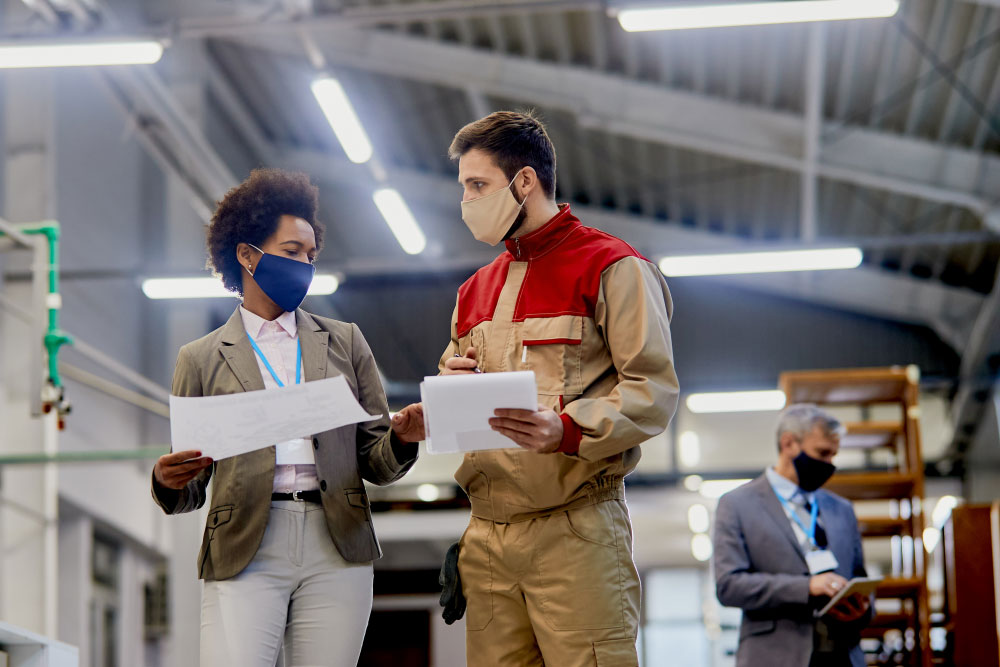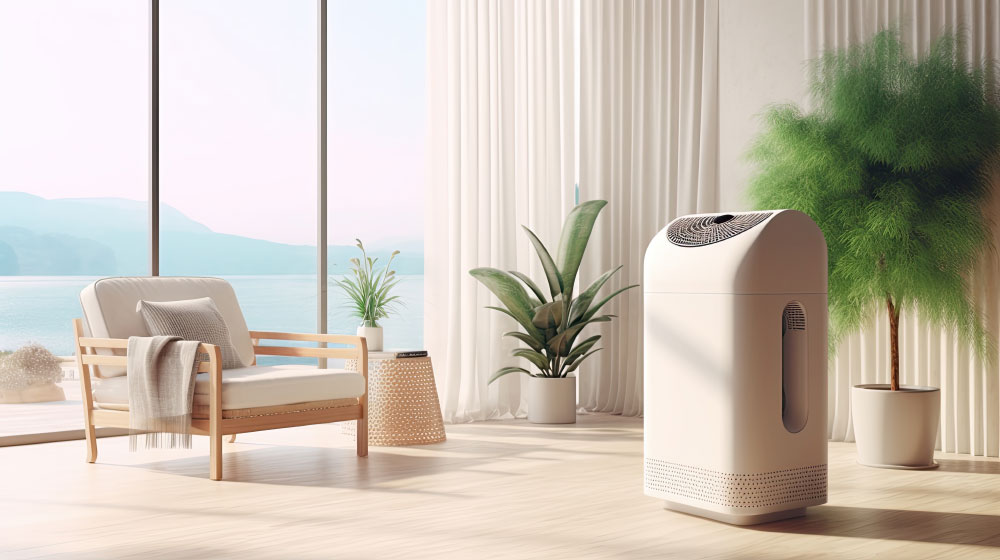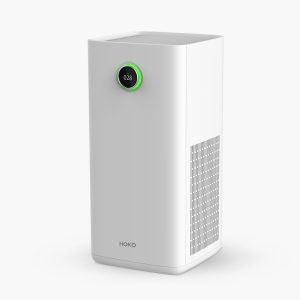Today we’re diving deep into the world of air purifiers. With growing concerns about air pollution, these trusty devices have become a staple in homes and offices worldwide. But did you know that China has emerged as a major player in the air purifier market? In this article, we’ll explore the different types of air purifiers imported from China, where to find them, and how to choose the right manufacturer for your needs. So, if you’re ready to breathe cleaner air and take your air purification game to the next level, keep reading.
Types of Air Purifiers Imported from China
You might think that all air purifiers are created equal, but that’s far from the truth. When you’re importing air purifiers from China, you need to know your options. Let’s take a closer look at the types of air purifiers you can find in the Chinese market:
HEPA Air Purifier: Your Particle-Busting Companion
HEPA air purifiers are like the superheroes of the air purification world. They use HEPA filters to capture a whopping 99.97% of particles in the air, even those as small as 0.3 micrometers. That means they can tackle everything from pollen to paint pigments. Say goodbye to dust and mold spores!
Portable Air Purifier: Clean Air, On-the-Go
These compact devices are perfect for small spaces or single rooms. They target viruses, bacteria, and smoke particles, making them a valuable addition to your air quality arsenal. While they won’t replace other purifiers or HVAC systems, they’re great for spot cleaning.
Home Air Purifier: A Breath of Fresh Air at Home
Designed to fit snugly into small spaces, home air purifiers cover up to 70 square meters. Whether it’s your office or your living room, they’ve got you covered. Clean air for a healthier home environment!
Water Air Purifier: The Refreshing Option
Water-based air purifiers are unique. Instead of traditional filters, they use water to eliminate dust, allergens, and even add humidity. Some folks even use them as aroma diffusers. A breath of fresh, moist air!
Smart Air Purifier: The Future of Air Quality Control
With Wi-Fi connectivity, smart air purifiers put you in charge. Monitor and control these high-tech devices from your phone. They’re as portable as regular purifiers but offer advanced control options.
Office Air Purifier: Tackling Sick Building Syndrome
Ever feel fatigued at work, only to feel better once you leave the office? Office air purifiers can help combat Sick Building Syndrome, using HEPA technology to eliminate the airborne contaminants responsible for that post-workday fatigue.
Desktop Air Purifier: A Small Wonder for Your Desk
Desktop air purifiers may be compact, but they pack a punch. Perfect for filtering out pollen, dust, mold, allergens, bacteria, viruses, and even wildfire and cigarette smoke. The only downside? They can’t handle odors.
Medical Air Purifier: Protecting Health Facilities
In medical settings like doctors’ offices and hospitals, air quality is critical. That’s where medical-grade air purifiers come in, equipped with high-efficiency filtration to capture bacteria, particles, viruses, VOCs, and chemical vapors. Protecting the vulnerable!
Industrial Air Purifier: Covering Large Areas with Ease
Industrial air purifiers are beasts when it comes to air cleaning. Designed for large, crowded spaces, they integrate into ventilation systems, making them incredibly efficient. Clean air for big places!
Stay tuned as we explore the quality standards and requirements for importing air purifiers from China in our next section. Clean air is just a read away!
Quality Standards and Requirements for Imported Air Purifiers from China
Now that we’ve uncovered the different types of air purifiers China has to offer, it’s essential to understand the quality standards and requirements to ensure you’re getting the best product for your money. While there might not be government standards, private organizations have stepped in to set the bar. Here’s what you need to know:

ASTM-F50: Measuring Particle Counts
The ASTM-F50 standard practices for continuous sizing and counting of airborne particles ensure you can measure the effectiveness of air-cleaning devices when it comes to removing particles from indoor air. A crucial benchmark to consider.
ASTM F2608-07: Evaluating Cleaning Processes
This standard test method determines the change in room air particulate counts as a result of the vacuum cleaning process. Knowing how well your air purifier can clean up after itself is essential.
CEPA AB 2276: Ozone Emission Standards
In California, CEPA Air Resource Board AB 2276 Air Cleaner Standards defines ozone emissions from indoor air cleaning devices. Protecting consumer health by keeping ozone levels in check is a must.
UL Standards 867 Ozone Test: Ensuring Safety
The UL Standard 867 Ozone Test Method helps guarantee that air purifiers meet ozone emission concentration standards, ensuring safety and proper labeling.
The US Consumer Product Safety Commission (CPSC): Ensuring Safety for Consumers
The CPSC ensures that all consumer products, including air purifiers, meet safety standards. A crucial certification to check for.
OEHHA: Assessing Health Effects
OEHHA assesses the health effects of chemicals in indoor air, helping you understand the impact of pollutants on both consumers and the environment.
Now that you’re armed with knowledge about standards and requirements, let’s explore where to find air purifier manufacturing bases in China.

Where are the China Air Purifier Manufacturing Bases?
When you’re ready to take the leap and find the perfect air purifier for your needs, you’ll want to know where to look. China has several manufacturing bases where you can meet reliable air purifier manufacturers. Here are some cities to consider:
Zhongshan, Guangdong: The Lighting Capital with Air Purifier Expertise
Known as the lighting capital of China, Zhongshan is home to numerous air purifier manufacturers. Guzhen Town boasts the largest number of production facilities and the largest wholesale market, making it a go-to destination for air quality solutions.
Dongguan, Guangdong: A Diverse Manufacturing Hub
Dongguan offers a diverse manufacturing landscape, covering everything from petrochemicals to electronics. Here, you’ll find reputable air purifier manufacturers like Dongguan Yimao Filter Media Co., Ltd and more.
Ningbo, Zhejiang: Proximity to Ports for Efficiency
Ningbo’s strategic location near ports makes it a hotspot for air purifier manufacturing. Its industrial clusters include portside industries, high-tech sectors, and traditional superior industries. You won’t have trouble finding an air purifier factory here.
Foshan, Guangdong: Quality Air Purifiers from Guangdong
Foshan, located in Guangdong province, boasts numerous air purifier factories. Companies like Foshan Nuobio Electrical Appliance Co. Ltd and Foshan Jinxinghui Electrical Appliance Co., Ltd are making waves in the industry.
Shenzhen, Guangdong: The Electronics Hub
Shenzhen is known as the largest electronic manufacturing city globally, and it’s home to over 10,000 manufacturing factories. You’ll find a wide variety of air purifiers here, including GAFCO Air Filters and Shenzhen Vamia Co., Ltd.
Now that you know where to find air purifier manufacturers, let’s move on to the critical task of selecting the right manufacturer for your needs.
Where to Buy Air Purifiers from Chinese Manufacturers
Choosing the right manufacturer is paramount when importing air purifiers from China. It can be a costly and exhausting process if you don’t do your due diligence. Here are some methods to help you make an informed decision:
Google Search: The Easy Starting Point
Start with a Google search for air purifier manufacturers from China. While larger companies may not heavily invest in SEO, dig beyond the first page of results to discover hidden gems. Use the contact information provided on their websites to reach out.
Trade Shows: A Goldmine for Serious Buyers
Consider attending trade shows in China, where you can meet numerous suppliers and buyers. Many top Chinese air purifier manufacturers prefer face-to-face connections and may not be as visible online.
Yellow Pages: A Directory of Manufacturers
Online directories like Yellow Pages list manufacturers in various categories. Navigate to the air purifier category and use the provided details, such as phone numbers and emails, to connect with potential suppliers.
Sourcing Agents: Hassle-Free Importation
Sourcing agents like Huntersourcing offer a range of services, from negotiations and supplier identification to quality control management and logistics. They can help you navigate the complexities of importing from China with ease.

B2B Websites: Cost-Effective and Comprehensive
B2B websites are a cost-effective starting point for newcomers. These platforms host profiles of thousands of manufacturers and traders from China. A simple search for “air purifier” will yield a treasure trove of options.
Some of the best B2B websites to explore include Made-in-china.com, alibaba.com, globalsources.com, aliexpress.com, and chinabrands.com.
In our next section, we’ll unravel the complexities of importing air purifiers from Chinese suppliers, ensuring a smooth journey from purchase to delivery.
How to Import Air Purifiers from China Supplier
Importing air purifiers from China may seem daunting, especially for newcomers. The process can be complex, confusing, and expensive. However, with the right knowledge and approach, you can navigate it successfully. Here are essential factors to consider:
Quality Standards: Ensuring Compliance
Ensure that the manufacturer you select complies with quality standards. You don’t want to import goods only to realize they don’t meet the required standards during the clearance process.
Design: Matching Your Vision
Some manufacturers excel in design, while others focus on assembly. Send your design specifications to potential manufacturers to ensure they can deliver what you need.
Materials: Choose Wisely
Air purifiers are made of various materials, including plastic, HEPA filters, and more. Select materials that align with your target market and customer preferences.
OEM & ODM: Know the Difference
Understand the difference between Original Equipment Manufacturing (OEM) and Original Design Manufacturing (ODM). This impacts who provides the design and tooling. HOKO specializes in offering top-notch OEM/ODM manufacturing solutions.

Types of Air Purifiers: Match Your Needs
Ensure the manufacturer can provide the types of air purifiers you require. Some specialize in specific categories, so choose accordingly.
Accessories: Consider Replacement Parts
Air purifiers often require replacement parts like carbon filters and HEPA filters. Ensure your manufacturer can supply these essential components.
Quality Control: Don’t Compromise
To avoid low-quality goods, don’t choose manufacturers solely based on price. Consider hiring a sourcing agent for in-person quality inspections.
Packaging: Eco-Friendly Matters
Select a manufacturer that uses eco-friendly or reduced-pollution packaging. This can make your product more appealing to environmentally-conscious consumers.
Shipping: Explore Your Options
Understand the different shipping options available, including sea freight, air freight, rail, regular post, and express courier. Choose the one that aligns with your needs in terms of safety, delivery time, and cost.
We’re nearing the end of our journey, but there’s one critical question left to answer: which air purifier is the best for you? Let’s dive into it in our next section.

How to Choose the Best Air Purifier
Selecting the best air purifier can be a challenge with so many options on the market. To help you make an informed decision, consider these factors:
Different Types of Air Filters: Tailoring to Your Needs
Air purifiers come with various filter types, including HEPA, electrostatic, carbon, pre-filters, and electronic filters. Choose the one that addresses your specific air quality concerns.
Air Filter Material: Modern Efficiency
Manufacturers use air filtration membranes made of various materials. Synthetic materials are often more efficient and durable than traditional filtering paper materials.
Air Filter Specifications: Porosity and Efficiency
Understanding filter specifications, such as porosity and efficiency, is crucial. HEPA filters and ULPA filters are effective at screening out tiny particles.
Air Filter Components: Fan and Filter
Pay attention to the fan and filter components. They work together to ensure efficient air purification.
Air Filter Systems: CADR and More
Consider Clean Air Delivery Systems (CADR) ratings to assess air purifier effectiveness. Units with high CADR for smoke are an excellent choice for comprehensive air cleaning.
In our final sections, we’ll uncover how air purifiers work, where to place them for optimal performance, and when to use them for maximum benefits.
How Air Purifiers Work
Ever wondered how these magic boxes clean the air you breathe? It all comes down to a simple process:
The fan draws in indoor air, either from the front or through natural airflow.
Once inside, the air passes through various filters, which capture pollutants like pollen, dust particles, and even dust mites.
After a thorough cleansing, the air is released back into the room through the fan, leaving you with fresher, cleaner air to breathe.
Now that you understand the inner workings of air purifiers, let’s explore where to place them for maximum effectiveness.
Where to Place Air Purifier
Location matters when it comes to air purifiers. Placing them in the right spot can increase their efficiency by up to 20%. Here are some placement tips:
- Avoid placing them behind obstacles like TVs or in corners to ensure optimal air circulation.
- Position them near the sources of pollutants, such as mold spores, smoke, and dust, for targeted purification.
- Elevate the air purifier 3-5 feet above the ground for better performance.
- Choose areas with high airflow, like near windows or doorways, for efficient air exchange.
- Steer clear of high-humidity zones like kitchens and bathrooms to prolong the life of your purifier.
By following these placement guidelines, you’ll make the most of your air purifier and enjoy cleaner air in your living or working space.

When to Use Air Purifier
Here’s the final piece of the puzzle: when should you run your air purifier? The answer is simple: all day, every day. Air pollution can have severe health effects, including asthma, pre-term births, and more. With air purifiers running constantly, you’ll eliminate pet hair, mold, and dust, ensuring better sleep and protection from allergies and asthma.
Which Air Purifier is the Best for You?
You’ve learned about types, manufacturing bases, importation, standards, and placement. Now, the million-dollar question: which air purifier is the best for you? To make the right choice, consider your specific needs and preferences, filter types, materials, specifications, components, systems, and CADR ratings. Armed with this knowledge, you’ll breathe easier and live healthier with the perfect air purifier by your side.
That’s a wrap on our comprehensive guide to air purifiers from China. Whether you’re a seasoned pro or a newbie in the world of air purification, you’re now equipped with the knowledge and insights to make the best choice for your air quality needs. Breathe easy, my friends!





